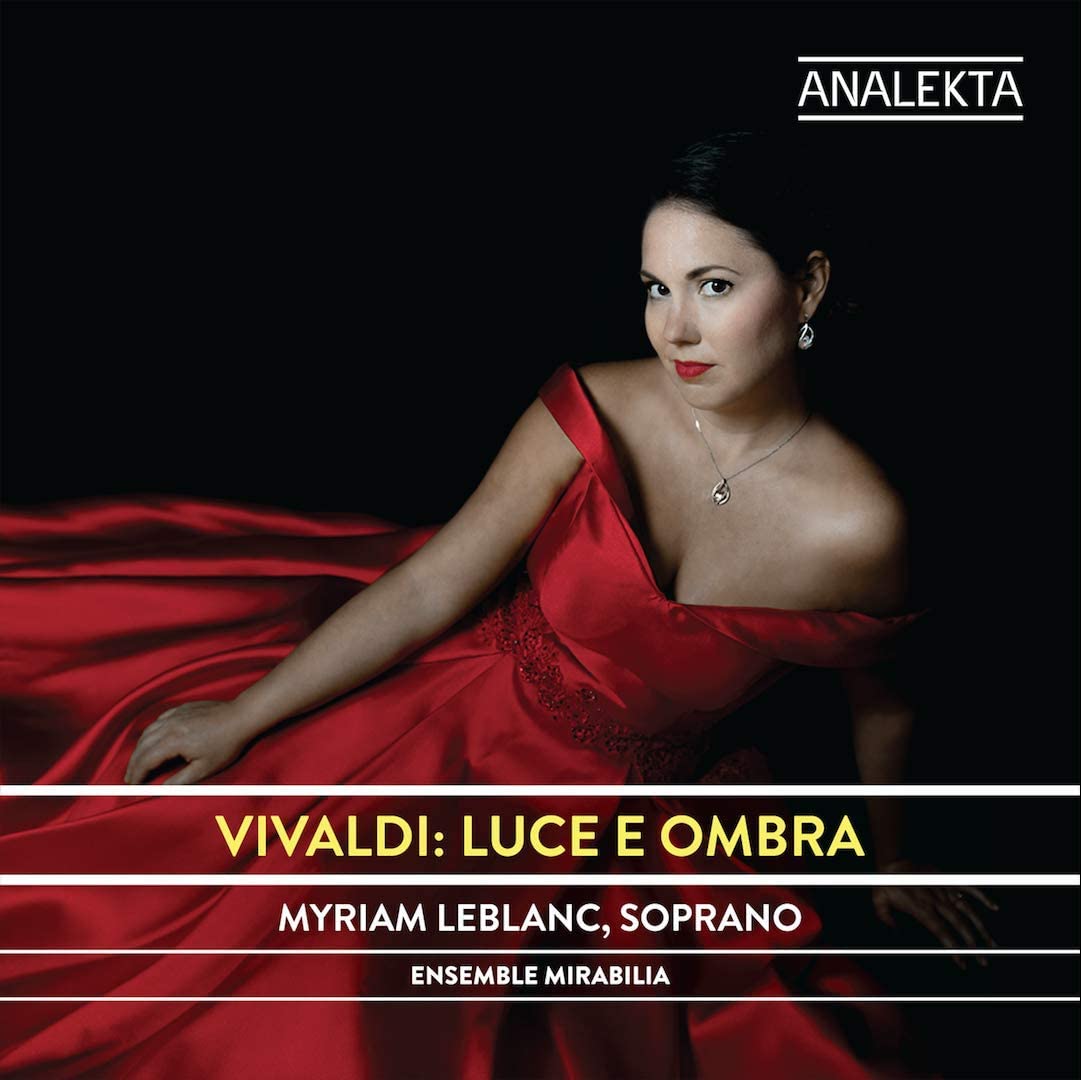VIVALDI Luce e Ombra
View record and artist detailsRecord and Artist Details
Genre:
Opera
Label: Analekta
Magazine Review Date: 03/2021
Media Format: CD or Download
Media Runtime: 66
Mastering:
DDD
Catalogue Number: AN2 9137

Tracks:
| Composition | Artist Credit |
|---|---|
| Farnace, Movement: Gelido in ogni vena (Act 2, scene 6) |
Antonio Vivaldi, Composer
Ensemble Mirabilia Myriam Leblanc, Soprano |
| Ercole su'l Termodante, Movement: Zeffiretti che sussurate |
Antonio Vivaldi, Composer
Ensemble Mirabilia Myriam Leblanc, Soprano |
| (12) Sonatas for Violin and Continuo, Movement: A minor, RV32 |
Antonio Vivaldi, Composer
Antoine Malette-Chénier, Harp |
| Giustino, Movement: Vedro con mio diletto |
Antonio Vivaldi, Composer
Ensemble Mirabilia Myriam Leblanc, Soprano |
| Farnace, Movement: Da quel ferro che ha svenato |
Antonio Vivaldi, Composer
Ensemble Mirabilia Myriam Leblanc, Soprano |
| Sonata for Oboe and Continuo |
Antonio Vivaldi, Composer
Ensemble Mirabilia |
| Bajazet (aka Tamerlano), Movement: Sposa son disprezzeta |
Antonio Vivaldi, Composer
Ensemble Mirabilia Myriam Leblanc, Soprano |
| Arsilda, regina di Ponto, Movement: Ben conosco a poco |
Antonio Vivaldi, Composer
Ensemble Mirabilia Myriam Leblanc, Soprano |
| All'ombra di sospetto |
Antonio Vivaldi, Composer
Ensemble Mirabilia Myriam Leblanc, Soprano |
Author: David Vickers
Flautist Grégoire Jeay explains that the trio Ensemble Mirabilia hope to capture Vivaldi’s ‘many contrasting styles – light and dark, happiness and sadness, exuberant joy and despair’. It is a massive exaggeration to claim that ‘In the 18th century, harp was frequently used instead of harpsicord in the continuo group’, but the use of Antoine Malette-Chénier’s baroque triple harp in lieu of keyboard continuo in these rearrangements is evidently fundamental to the group’s raison d’être. Much of the music is transposed or otherwise adjusted. Movements from an oboe sonata in C minor (RV53), put up to D minor so its solo part is refitted to the range of a Baroque flute, are interspersed throughout the programme – a nice idea that groups the vocal pieces into aptly contrasting pairs. Two movements from a violin sonata in A minor (Op 2 No 12 RV32) are transcribed for solo harp.
‘Gelido in ogni vena’ (the 1731 Pavia version of Farnace) has its voice part raised up an octave, sung by Myriam Leblanc piercingly with a few stratospheric ornaments; instead of the original’s icily dissonant strings conveying guilt, the transcription for flute, cello and harp sounds weightless and delicate. From the same opera, Berenice’s lively ‘Da quel ferro che ha svenato’ eschews theatrical venom and is reinvented as a dialogue between Leblanc’s lightly tripping voice and Jeay’s agile flute.
It is not mentioned that Irene’s ‘Sposa son disprezzata’ (Bajazet) was composed by Giacomelli. Moreover, ‘Zeffiretti, che sussurrate’ – a gently bubbling evocation of murmuring breezes – does not belong to Ercole sul Termodonte; preserved in Vivaldi’s own archive, nobody knows the origins of this isolated aria, and his parody version for Ippolita in Ercole has different words. Anastasio’s ‘Vedrò con mio diletto’ (Giustino) hints towards a ciacona, and there is a springy bounce to Barzane’s ‘Ben conosco a poco’ (Arsilda). Notwithstanding a few mildly anaemic moments in her upper range, Leblanc’s graceful melodicism in the cantata All’ombra di sospetto (RV678) is matched by Ensemble Mirabilia’s deftness of touch.
Discover the world's largest classical music catalogue with Presto Music.

Gramophone Digital Club
- Digital Edition
- Digital Archive
- Reviews Database
- Full website access
From £8.75 / month
Subscribe
Gramophone Full Club
- Print Edition
- Digital Edition
- Digital Archive
- Reviews Database
- Full website access
From £11.00 / month
Subscribe
If you are a library, university or other organisation that would be interested in an institutional subscription to Gramophone please click here for further information.




